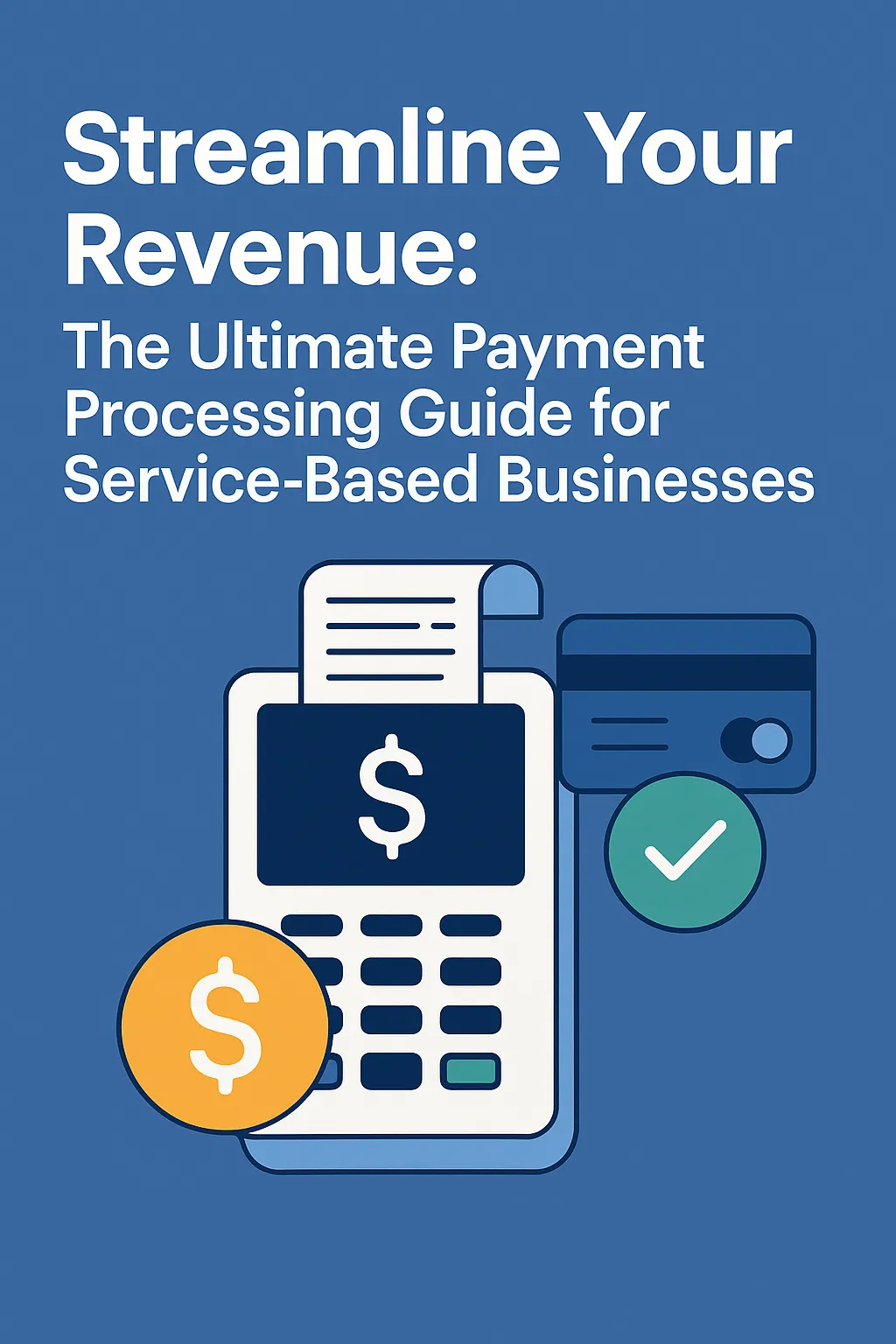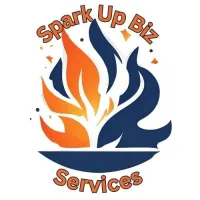Our Latest Articles

Streamline Your Revenue: The Ultimate Payment Processing Guide for Service-Based Businesses
Streamline Your Revenue: The Ultimate Payment Processing Guide for Service-Based Businesses
Why Payment Processing Is a Game-Changer for Service Businesses
Picture this: you’ve just wrapped up a major kitchen remodel. You fire off a slick digital invoice—and then… crickets. Days become weeks, suppliers get antsy, and your cash flow is tighter than your tool belt. If you’ve ever been stuck in the “invoice and pray” cycle, you know the struggle is real. 😩
But here’s the silver lining: modern payment processing can flip your revenue routine from a leaky faucet into a high-pressure hose. No more awkward “payment ping” reminders—just seamless transactions, pristine records, and stress-free cash flow. Ready to level up? Let’s dive in.
1. What Is Payment Processing? And Why It’s a Whole Other Beast for Services
Payment processing is the backstage choreography that takes a customer’s payment info, verifies it, and deposits funds into your account. While retail often means a quick scan at checkout, service businesses face extra complexity:
Time-based billing: Minute-by-minute tracking demands dynamic invoicing that auto-adjusts.
Variable scopes: From minor repairs to full-scale projects, each job needs custom line items and rates.
Milestone payments: Big projects require deposits, mid-project draws, and final balances. (Consumer financing may be available for your business...contact us to find out more.)
Retainers & subscriptions: Monthly maintenance plans or on-call agreements need reliable recurring billing.
Mobile/on-site transactions: Portable readers and offline-capable tools let you accept payments anywhere.
Without a solution built for this complexity, you end up hacking spreadsheets, chasing paper checks, and burning precious time better spent doing what you do best.
2. How Payment Processing Works: The 5-Step Breakdown
Understanding the backstage flow lets you optimize fees, boost security, and troubleshoot like a pro:
Payment Initiation
A client taps “Pay Now” on an emailed invoice, clicks a button in your app, scans a QR code, or swipes on a mobile reader.Authorization
Your gateway (Stripe, Square, etc.) sends details to the card network, which checks with the issuing bank for funds and possible flags.Authentication
Extra layers—3D Secure or one-time passcodes—verify the payer, shifting chargeback liability back to the issuer.Capture & Settlement
Capture: For card-on-file flows, “authorize” now and “capture” later—perfect for retainers.
Settlement: Funds land in your merchant account or wallet, typically within 1–3 business days. Next-day or instant payouts cost a small premium.
Reconciliation
Connected accounting tools automatically match payments to invoices, flagging mismatches for quick review.
Optimization tips: Batch settlements to lower fees; use webhooks for instant receipts; leverage partial captures for flexible billing.

3. Common Pain Points & How to Crush Them
Service pros know these struggles all too well:
Delayed Payments
AR days balloon, delaying supplier and payroll obligations.Manual Errors
Typos, duplicate entries, and missed tax lines erode trust.Client Friction
Clunky checkout flows lose busy clients mid-process.Chargeback Drama
Without detailed docs, fighting disputes feels impossible.Shaky Forecasts
No real-time dashboards = blind forecasting.Compliance Risks
Mishandling card data can trigger hefty fines and reputation hits.
A modern, integrated payments stack automates, secures, and scales—ditch these headaches for good.

4. Picking the Right Payment Model
Choose the model that fits your size and needs:

If you process over $20K/month or need bespoke workflows, go merchant account + gateway.
For plug-and-play ease and fast launch.
If you’re a consultant seeking simplicity, invoicing tools with embedded links have your back.
5. Demystifying Fees & Maximizing Savings
Knowing your fee structure is power:

Example: $15,000/month volume, average $200/txn, fee 2.9% + $0.30 → $457.50/month.
Negotiate down to 2.4% and save ~$75/month ($900/year).
Hacks:
Push clients to ACH for lower fees.
Ask for volume discounts once you hit higher thresholds.
Compare providers regularly to stay competitive.
6. Tailored Workflows for Every Service Type
Hourly & Time-Based
Sync with invoicing tools. Automate weekly invoices for retainers.
Project-Based
Automate milestone billing at 30/60/100% completion. Embed triggers in e-signed contracts.
On-Site Services
Display QR codes on tablets for contactless payments. Use invoicing, payment links, and remote terminals.
Emergency Jobs
Tokenize cards for pre-auth, use invoice templates to send bills in under 30 seconds.
7. Security & Fraud Prevention
Trust is your currency. Protect it:
PCI DSS Compliance: Partner with providers that handle compliance.
Tokenization: Store non-sensitive tokens, not raw card data.
3D Secure & 2FA: Block risk before it happens.
Real-Time Monitoring: Flag odd IPs, mismatched addresses, rapid high-value charges.
A security-first mindset saves you headaches and reputational damage.
8. Supercharging Cash Flow
A turbocharged payments system fuels growth:
Instant/Next-Day Payouts: Access cash faster.
Automated Reminders & Late Fees: Incentivize on-time pay.
Partial Payments & Deposits: Get projects rolling without full upfront.
Analytics Dashboards: Forecast seasonal dips and growth.
Client Portals: One-click self-serve billing boosts satisfaction.
9. Emerging Trends to Watch
Pay by Bank (Open Banking): Slash fees, speed up transfers.
BNPL for Services: Offer installments without merchant risk. (We offer consumer financing!)
Embedded Scheduling Payments: Book and pay in one seamless flow.
AI-Driven Invoicing: Auto-categorize, forecast delinquencies, suggest terms.
Conversational & Voice Payments: “Alexa, pay my plumber $250”—done.
10. Legal & Compliance Must-Knows
PCI DSS: Even with outsourced payments, share some responsibility.
Data Privacy: GDPR, CCPA, PIPEDA apply if you serve clients across borders.
Contracts & Tax: Embed payment terms in e-sign agreements; use tax engines for sales tax/VAT.
Record Retention: Keep logs, invoices, and signed contracts for at least seven years.
11. Measuring ROI & Impact
Track these KPIs:
Days Sales Outstanding (DSO): Lower it, and cash flow gets healthier.
Cost per Transaction: Total fees ÷ # transactions.
Automation Rate: % of auto-reminders vs. manual follow-ups.
Chargeback Rate: Aim <0.5%.
Staff Time Saved: Hours reclaimed × billing rate.

A real example: Move from 45 to 18 DSO, save $58K in benefits vs. $8.4K in costs → 593% ROI.
12. Expert Insights & Lessons Learned
Dana Lee, CFO: “Beyond fees, the operational uplift was massive—our team shifted from fire drills to strategic cash forecasting.”
Ravi Patel, Payments Consultant: “Layer security early with tokenization and 3D Secure to avoid costly chargebacks.”
Miguel Torres, Contractor: “An easy payment link drove referrals—clients talk when paying feels like magic.”
13. Implementation Roadmap
Audit: Map current quote-to-cash flow.
Define Goals: DSO targets, cost reductions, automation rates.
Vendor RFP: Match features, integrations, compliance.
Plan Integrations: Accounting, CRM, scheduling, project tools.
Pilot: Test end-to-end with a small subset.
Train: Workshops, guides, role-plays for all teams.
Go-Live: Launch on a set date; monitor daily KPIs.
Iterate: Quarterly reviews, client feedback, fee renegotiation.
14. Pitfalls to Dodge
Underestimating Change Management: Involve teams early, show quick wins.
Overlooking Hidden Fees: Statement fees, cross-border surcharges add up.
Neglecting Mobile UX: If your link isn’t mobile-optimized, you’ll lose payments.
Skipping Security Audits: Regular tests catch threats before they hit.
Ignoring Data: Set recurring data reviews to spot trends and tweak workflows.
15. FAQs
Q1: Can I avoid storing card data?
A1: Yes—use tokenization and leave PCI headaches to the provider.
Q2: How do refunds work?
A2: Automate via your provider’s dashboard and link refunds to the original txn for clear records.
Q3: Multiple pay options on one invoice?
A3: Embed buttons for cards, ACH, and wallets—clients choose their fav.
Q4: Handling international clients?
A4: Look for multi-currency support, dynamic FX, and local methods like iDEAL or Alipay.
Q5: Worth paying for instant payouts?
A5: Real-time cash flow can justify a ~1% premium if you need funds immediately.
From Clunky to Crushing It
Upgrading your payment processing isn’t a back-office chore—it’s a strategic leap. Automate what you can, secure what you must, and free yourself to focus on delivering top-tier service. Your bank balance—and your sanity—will thank you. 🎉
Next Steps:
Schedule an appointment with SparkUpBiz Services! We have several different solutions, providers, and tools that can help you. Let us help you figure out what works out best for YOU!
Audit your current payment fees and workflows this week.
Calculate your potential ROI and share it with decision-makers.
Pilot your top provider picks.
Roll out, track DSO, and watch your cash flow go from drip to flood. 🚀
Go forth and get paid—fast!


